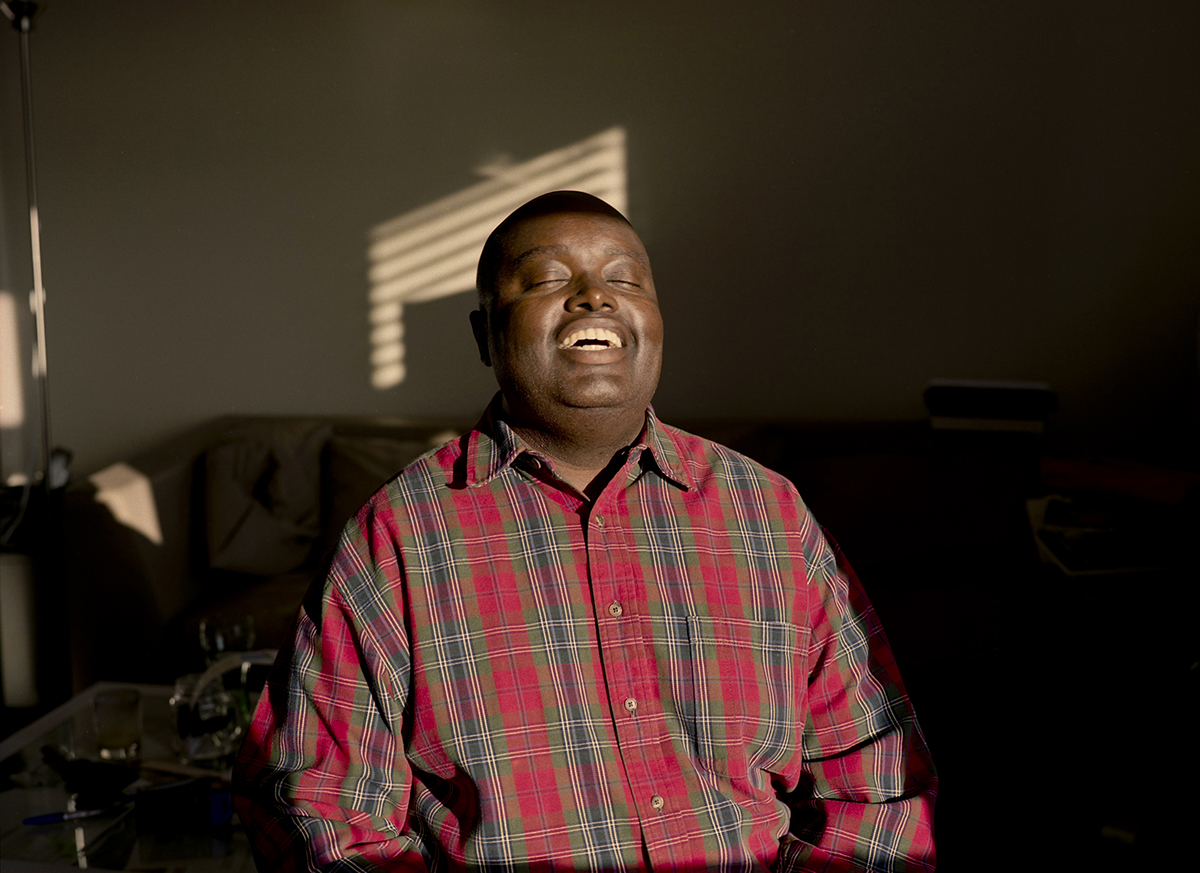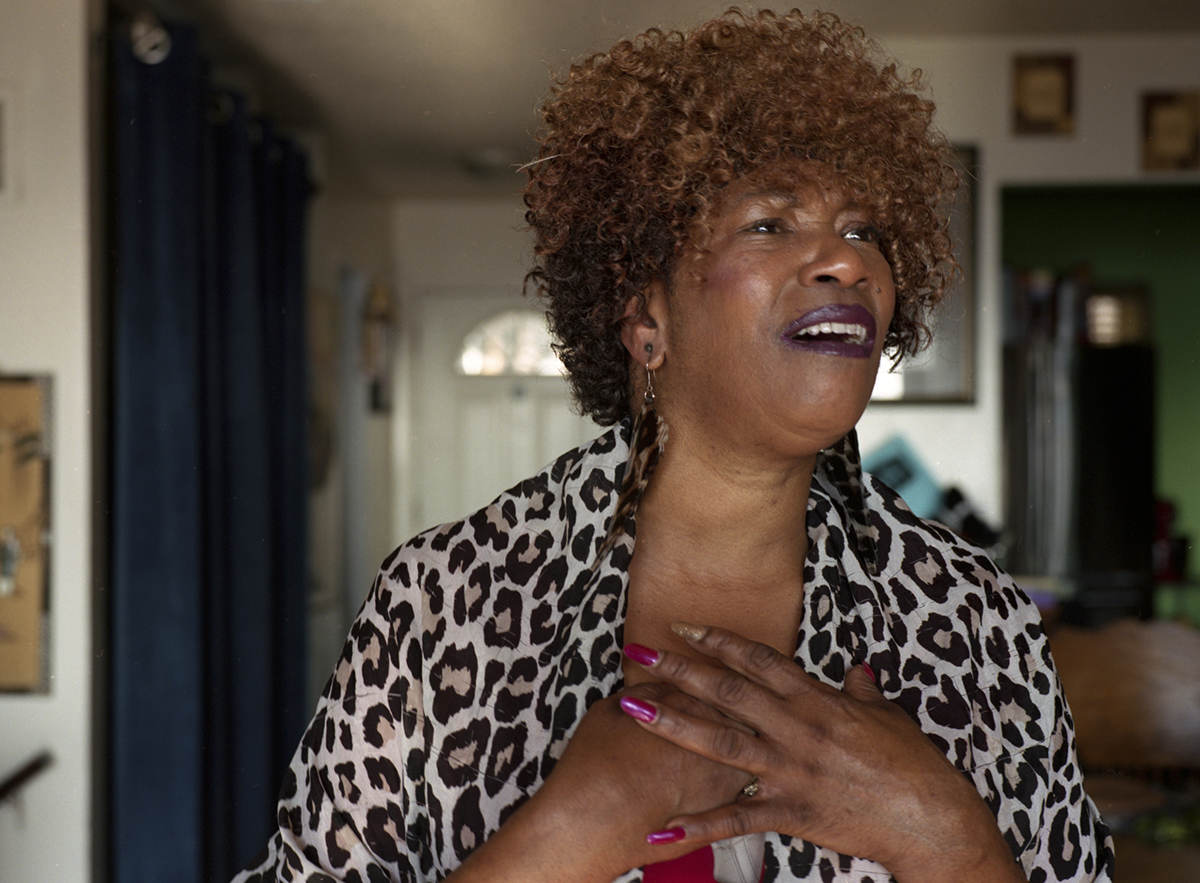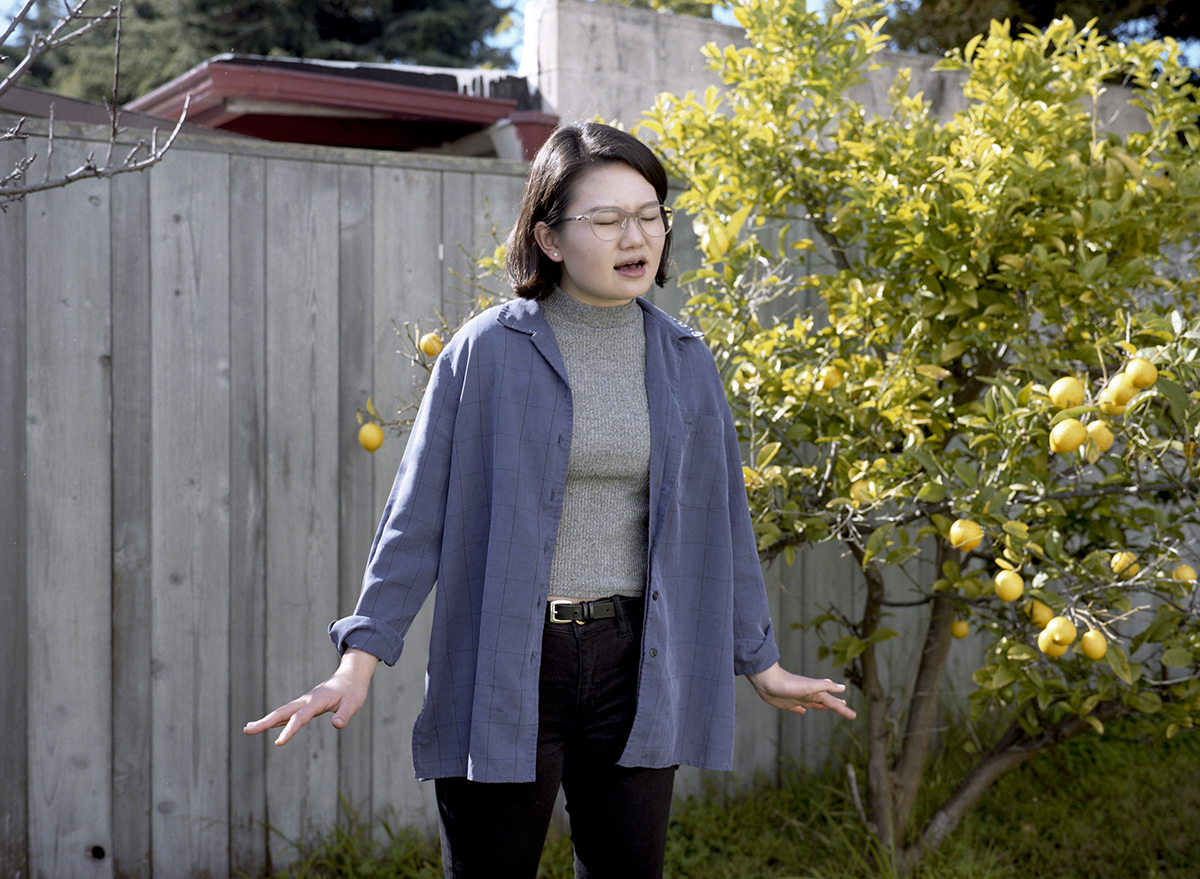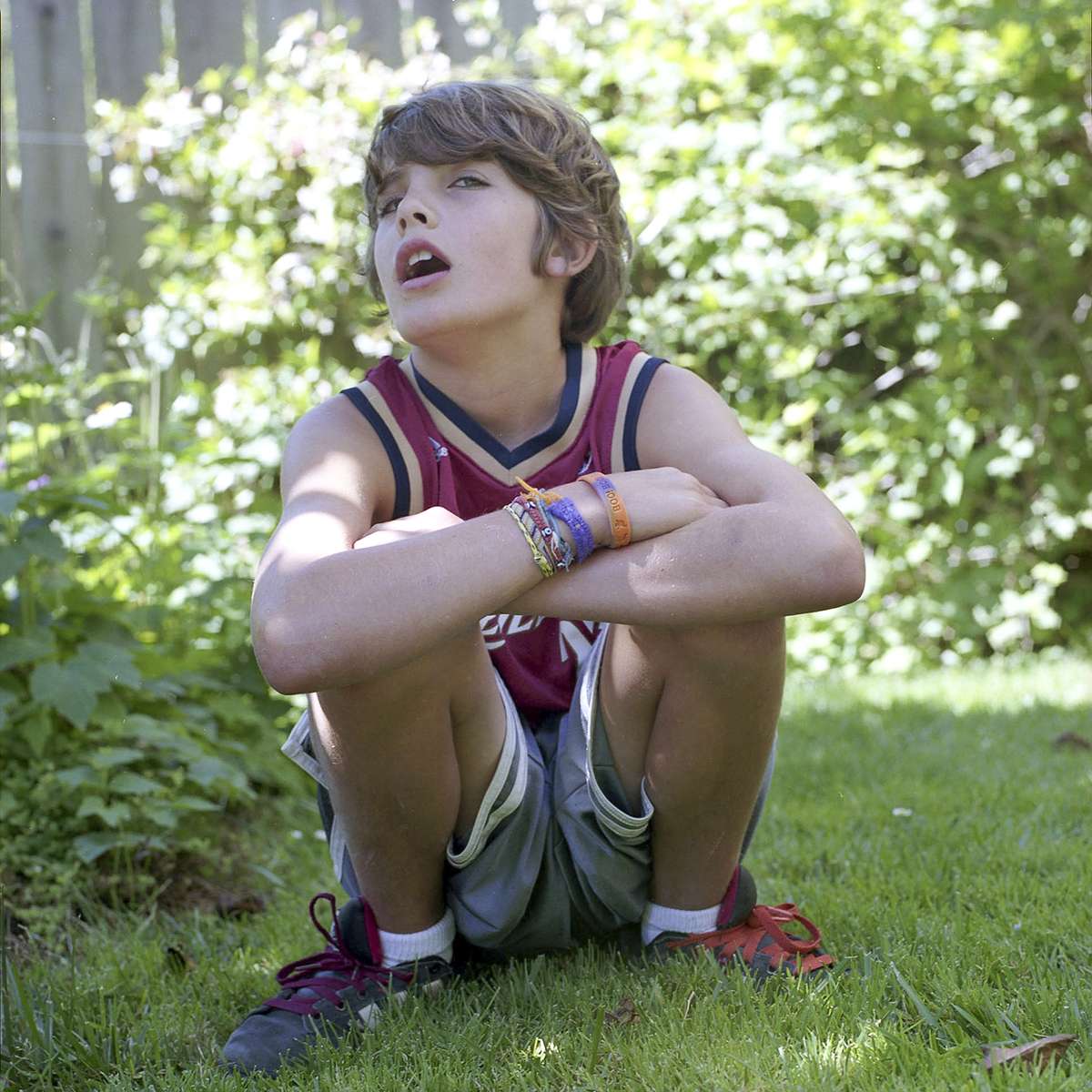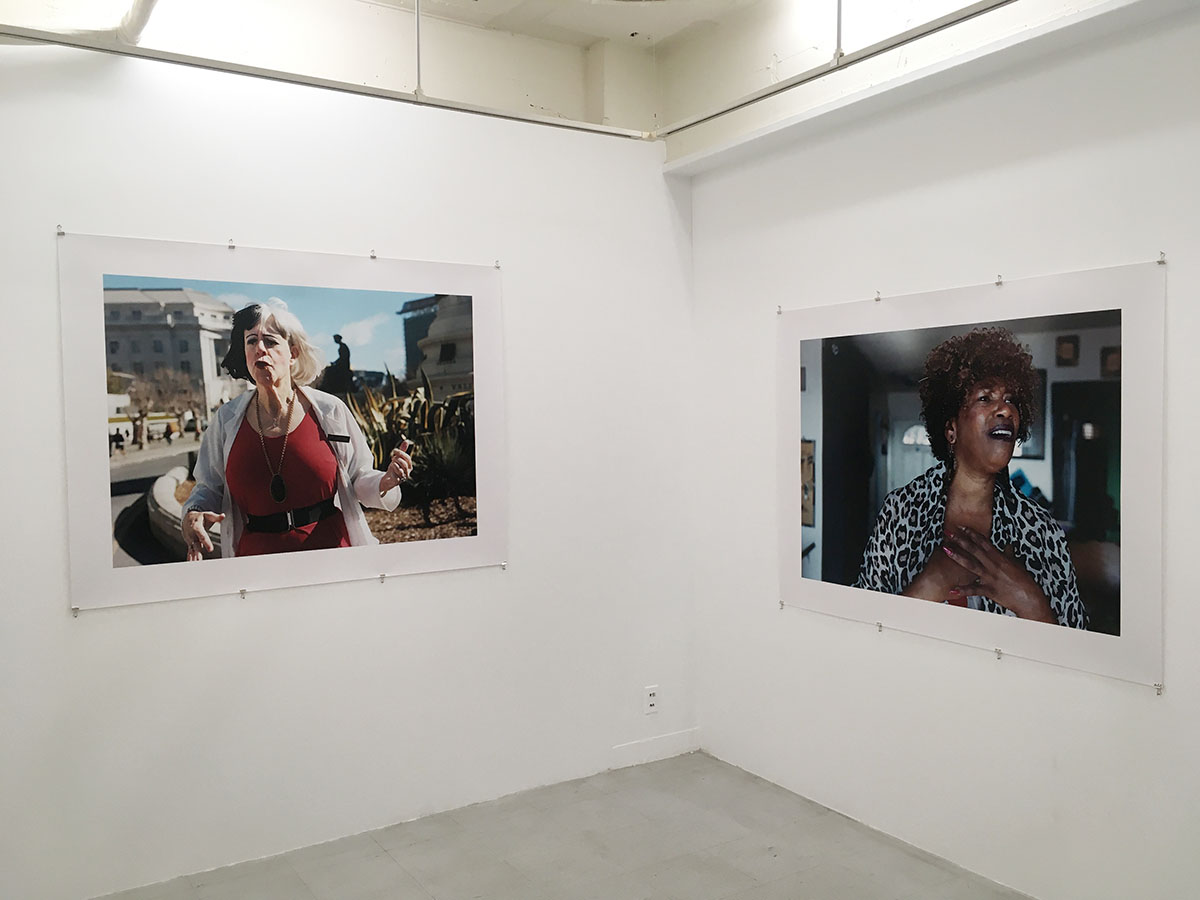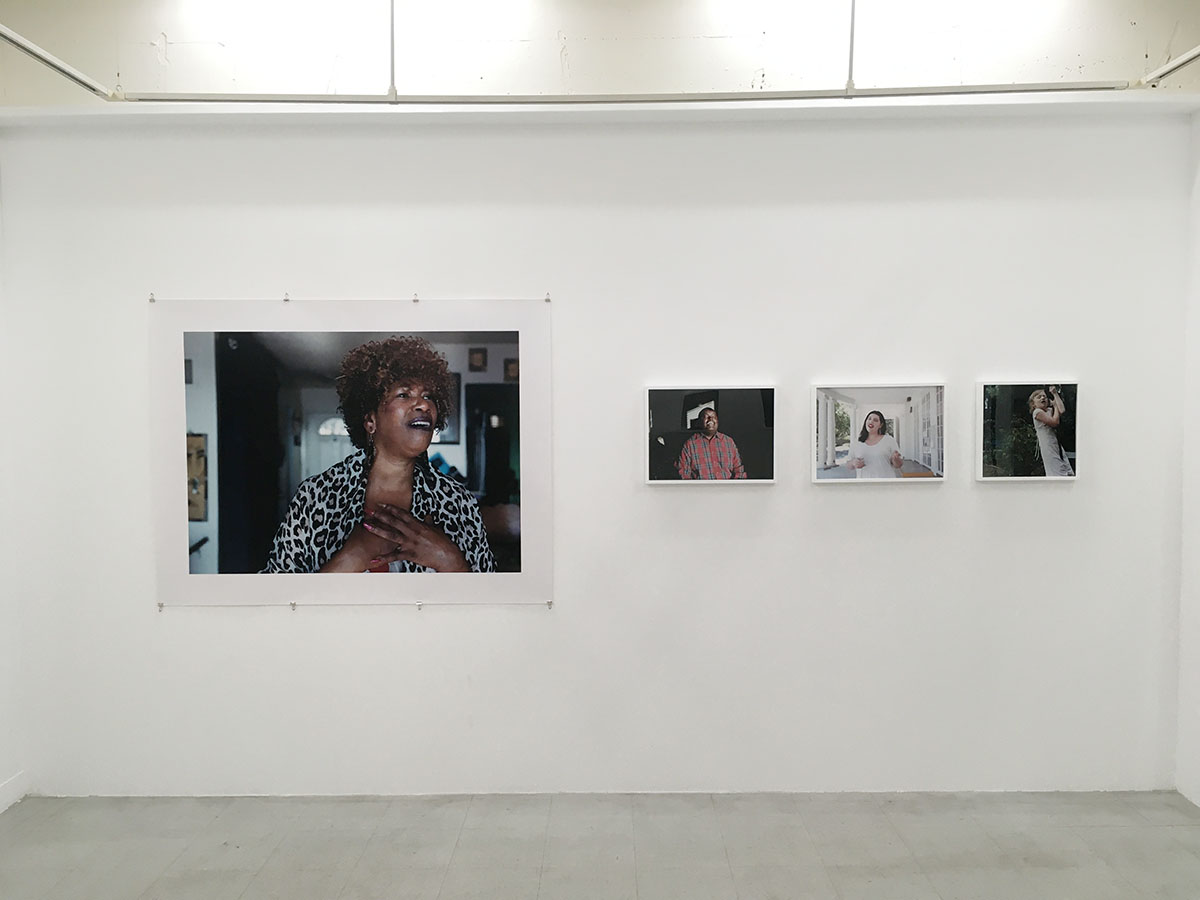APPERARANCE
January 25th Sat. – February 22nd San. 2020
12:00–19:00 (Sat 12:00–17:00)
Closed on Sunday and Monday
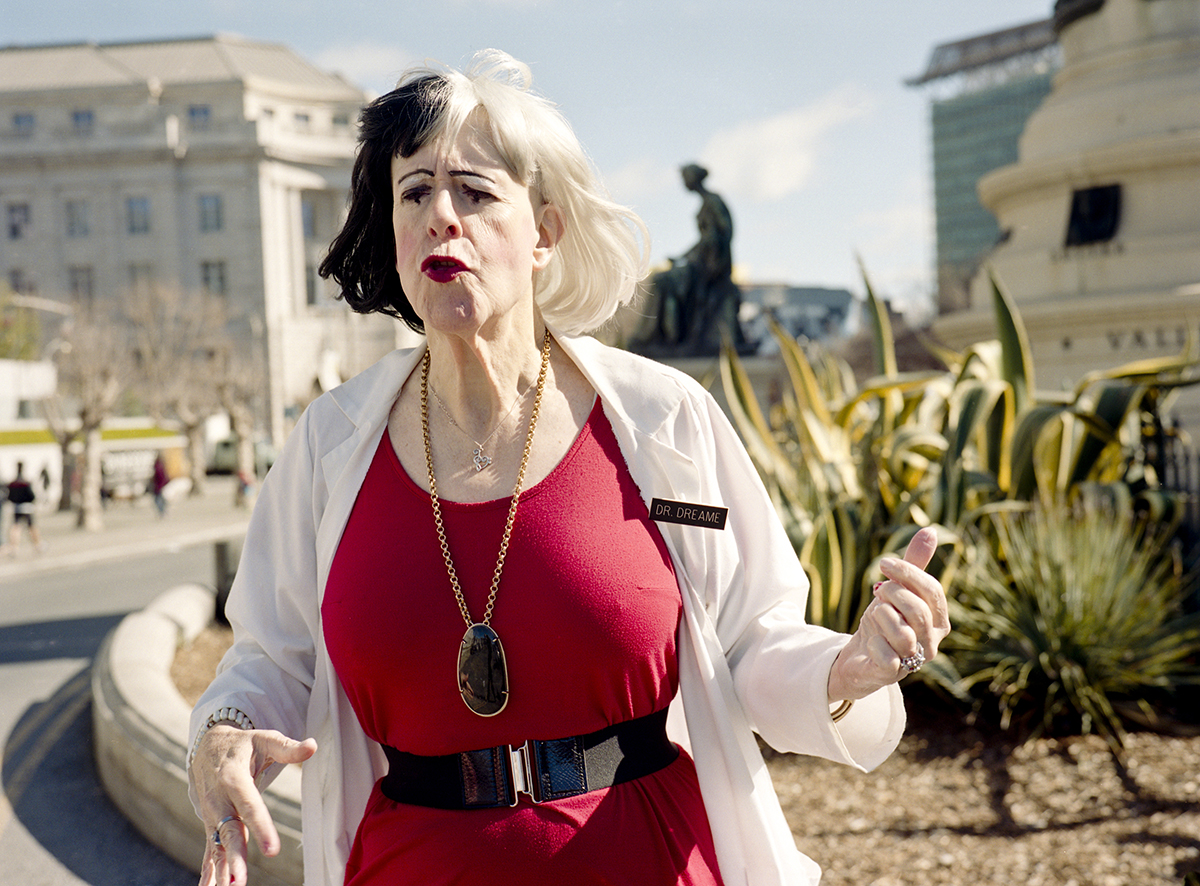
The Third Gallery Aya is very pleased to announce an exhibition by KANEKO Hiroyo as the first exhibition in 2020.
“It is the space of appearance in the widest sense of the word, namely the space where I appear to others as others appear to me, where men exist not merely like other living or inanimate things but make their appearance explicitly.” Hannah Arendt, The Human Condition.*
Appearance is a portrait series of people singing.
From summer to autumn of 2009, before I began photographing this series, I suffered from a brain ailment of unknown origin which debilitated me. Perhaps because of my unstable condition, my gaze was often drawn to the figures of children. At the same time as wishing I had their energy, I empathized with their apparent precariousness and their vulnerability. It was then that I heard that a musician friend of mine was teaching children to sing, and I felt I wanted to photograph “children who sing.”
Several years later, I happened to see a young man singing a song in an art gallery. He was just sitting on a bench and singing with no accompaniment. He seemed to be unguarded, but the solemn atmosphere of his demeanor enchanted those around him. In that moment, I felt that there was something that people had in common when they were singing, whether they were children or adults, and I began to photograph “adults who sing.”
People express their feelings when they sing. The melodies recall their yearnings for the past and the future. And the rhythms stir the subjects’ bodies, where a variety of expressions and gestures appear and disappear. A photograph cannot show feelings which are invisible, but it can capture an instance of ever-changing expressions. Using this special characteristic of photography, I wanted to capture the instant when a feeling appears unexpectedly on the subject’s face.
This may seem to be contradictory, but I changed the film format from a square to a rectangle in my creative process so as to take in more of the subject’s surroundings. If I wanted to isolate just the subject’s face, the background should get in the way. But the reason I didn’t go in the direction of eliminating it was that in shooting these subjects, I felt that there was an inherent meaning to the space in which they appear.
Since emigrating to the U.S. in 2002, until 2010 when I started Appearance, it was difficult for me to take photographs in this land. This was because I did not have a good answer to the question I asked myself, “Why am I taking this photograph of this (this person) here?” whenever I pointed my camera at a subject. I felt there was a hurdle I needed to overcome for me to take photographs as a foreigner in a foreign country. But when I felt I wanted to photograph “children who sing,” it didn’t matter to me whether this was a foreign country or I was a foreigner. To me the presence of children as well as the act of singing are universal. And adults, who are the extension of being children, are also universal human beings. This way of thinking allowed me to go anywhere to meet and talk to people and take their photographs.
Most of my subjects are people whom I encountered where I live around San Francisco and Oakland. Getting to know them in my daily life—through friends, apartment neighbors, my workplace, where I volunteer, at exhibits, or at gatherings at friends’ houses—I ask if I can photograph them and go to their houses or specified locations. I leave the selection of the song to them, and concentrate on pressing the shutter to lock into the photograph the instant they show that they exist in that space, are singing, and are resonating with their world. I wished to compile a collection piecing together each of the photographs I created this way. In order to present how “the space of appearance” of the individuals who appeared to my eyes to be my photographic subjects would clearly appear to the eyes of yet another person.
* Hannah Arendt, The Human Condition, (2nd, edition), University of Chicago Press, pp. 198-199, 1998.
Kaneko Hiroyo
Biography
| Born in Aomori Precture, Japan and lives in Oakland, CA.,US. | |
| 1987 | BA French Literature, Meiji Gakuin University, Tokyo |
|---|---|
| 2005 | MFA Photography, San Francisco Art Institute, San Francisco |
Awards
| 2022 | Awarded the 32th Society of Photography Award |
|---|---|
| 2017 | 1st place, 21st Juried Exhibition, Photographic Center North West (Juror: Sandra Philips) |
| 2012 | Winner, Philadelphia Museum of Art Photography Portfolio Competition (Jurors: Peter Barberie, Andrea Modica, Vince Aletti) |
| 2009 | Santa Fe Prize for Photography (Juror: Charlotte Cotton) |
Solo Exhibitions
| 2023 | The 32th Society of Photography Award Exhibition. Poetic Scape, Tokyo, Japan |
|---|---|
| 2020 | Appearance. The Third Gallery Aya, Osaka, Japan Appearance. Poetic Scape, Tokyo, Japan |
| 2019 | Garden Project. Social Art Lab, Kyushu University, Fukuoka, Japan Garden Project. Gallery Mestalla, Tokyo, Japan |
| 2018 | Appearance. KU REN BOH, Chohouin Buddhist Temple Gallery, Tokyo, Japan |
| 2017 | Appearance. Nikon Salon Gallery, Tokyo and Osaka |
| 2013 | Comes to the Light. Gallery Ishi, Tokyo, Japan |
| 2012 | Steam and Ice. Red Poppy Art Center, San Francisco, CA Unfolding Lives in Tohoku. Rayko Photo Center, San Francisco, CA |
| 2009 | Selections from Three Series. Togonon Gallery, San Francisco, CA Nagasaki Dialog. Nagasaki City Library, Nagasaki, Japan Sentimental Education. MIAD Perspectives Photography Gallery, Milwaukee Institute of Art and Design, Milwaukee, WI Nature/Nurture. Rayko Photo Center, San Francisco, CA |
| 2008 | Each Sun; Two persons show with Chris McCaw. Togonon Gallery, San Francisco, CA |
| 2006 | The Three Cornered World. Japan Information Center, Consulate General of Japan, San Francisco, CA |
| 2004 | fountains. Diego Rivera Gallery, San Francisco, CA |
| 2002 | Nagasaki Dialog. Photographers’ Gallery, Tokyo, Japan |
| 2001 | Bushes and Palace. Gallery La Camera, Tokyo, Japan Bushes and Palace. The Foreign Correspondent Club of Japan, Tokyo, Japan |
Selected Group Exhibitions
| 2023 | MOMAT Collection. The National Museum of Modern Art, Tokyo, Tokyo, Japan Disrance of Mind. Kurenboh, Tokyo, Japan |
|---|---|
| 2022 | Hibiya Okuroji Photo Fair. Hibiya Okuroji, Tokyo, Japan Alternative Roman. Sakaguchi-Rou and other venues in Osaka, Japan Recovery. Marugame Genichiro-Inokuma Museum of Contemporary Art |
| 2019 | Ancestral Journeys. Euphrat Museum of Art, De Anza College, Cupertino, CA |
| 2018 | Feast for the Eyes: The Story of Food in Photography Curated by Susan Bright and Denise Wolff. Louisiana Museum of Art and Science, Baton Rouge, LA |
| 2017 | THERE IS NO ALAS WHERE I LIVE Curated by Ann Jastrab. Jenkins Johnson Gallery, San Francisco, CA 21st Juried Photography Exhibition. Photographic Center Northwest, Seattle, WA |
| 2016 | Zones of Representation. SF Camerawork, San Francisco, CA |
| 2015 | Voices. Kala Art Institute, Berkeley, CA Heat. SF Camerawork, San Francisco, CA 3@6x6 face/people/action, three persons show with John Harding and Michael Jang curated by Hiroyo Kaneko. PHOTO, Oakland, CA |
| 2014 | Local Treasures Bay Area Photography. Berkeley Art Center, Berkeley, CA |
| 2013 | Nature as Muse. Murray Circle, Cavallo Point, CA |
| 2011 | Fukushima - Opening Doors with Compassion. Lutherkirche, Cologne, Germany LOST WORLDS > < MAKING WORLDS. Murata & Friends, Berlin, Germany |
| 2010 | THINGS ARE EXPANDING. Swarm Gallery, Oakland, CA |
| 2009 | PHOTOGRAPHY NOW: China, Japan, Korea. San Francisco Museum of Modern Art, San Francisco, CA |
| 2008 | Eighteen Months: Taking the Pulse of Bay Area Photography. San Francisco Arts Commission Gallery, San Francisco, CA |
| 2007 | Elusive Subjects; James Welling, Jun Shiraoka, Sanna Kannisto, Hiroyo Kaneko Curated by Hiroyo Kaneko. Togonon Gallery, San Francisco, CA Close Calls 2007. Headlands Center for the Arts, Sausalito, CA. |
| 2005 | Conversation with the Wall. Rood Division Artist Space, San Francisco, CA |
| 2002 | PHOTOGRAPHY TODAY 2 – [sait] site / sight. The National Museum of Modern Art, Tokyo, Japan |
Art Fair
| 2023 | HIBIYA OKUROJI PHOTO FAIR 2023. Hibiya OKUROJI, Tokyo, Japan |
|---|---|
| 2022 | HIBIYA OKUROJI PHOTO FAIR 2022. Hibiya OKUROJI, Tokyo, Japan |
| 2021 | ART OSAKA 2021. Osaka City Central Hall, Osaka, Japan Paris Photo 2021. Grand Palais Ephémère, Paris, France |
Publications
| 2020 | Appearance. Kyoto: Seigensha |
|---|
Public Collections
| San Francisco Museum of Modern Art, San Francisco, CA Philadelphia Museum of Art, Philadelphia, PA The National Museum of Modern Art, Tokyo, Tokyo, Japan |

